Abstract:
Photoacoustic (PA) imaging is becoming more attractive because it can obtain high-resolution and high-contrast images through merging the merits of optical and acoustic i...Show MoreMetadata
Abstract:
Photoacoustic (PA) imaging is becoming more attractive because it can obtain high-resolution and high-contrast images through merging the merits of optical and acoustic imaging. High sensitivity receiver is required in deep in-vivo PA imaging due to detecting weak and noisy ultrasound signal. A novel photoacoustic receiver system-on-chip (SoC) with coherent detection (CD) based on the early-and-late acquisition and tracking is developed and first fabricated. In this system, a weak PA signal with negative signal-to-noise-ratio (SNR) can be clearly extracted when the tracking loop is locked to the input. Consequently, the output SNR of the receiver is significantly improved by about 29.9 dB than input one. For the system, a high dynamic range (DR) and high sensitivity analog front-end (AFE), a multiplier, a noise shaping (NS) successive-approximation (SAR) analog-to-digital convertor (ADC), a digital-to-analog convertor (DAC) and integrated digital circuits for the proposed system are implemented on-chip. Measurement results show that the receiver achieves 0.18 µVrms sensitivity at the depth of 1 cm with 1 mJ/cm2 laser output fluence. The contrast-to-noise (CNR) of the imaging is improved by about 22.2 dB. The area of the receiver is 5.71 mm2, and the power consumption of each channel is about 28.8 mW with 1.8 V and 1 V power supply on the TSMC 65 nm CMOS process.
Published in: IEEE Transactions on Biomedical Circuits and Systems ( Volume: 15, Issue: 3, June 2021)
Funding Agency:
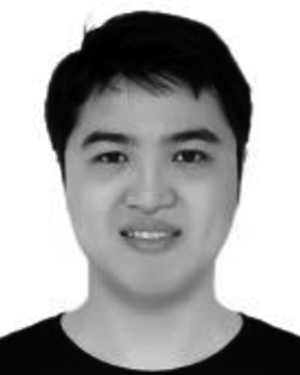
School of Electrical and Electronic Engineering, Nanyang Technological University, Singapore, Singapore
Chuanshi Yang (Member, IEEE) received the B.Sc. degree from Shandong University, Jinan, China, in 2012, the M. Eng. degree from Southeast University, Nanjing, China, in 2015, and the Ph.D. degree from Nanyang Technological University, Singapore, in 2020. His current research interests include the high-resolution low power ADC and interface circuits for ultrasound sensors.
Chuanshi Yang (Member, IEEE) received the B.Sc. degree from Shandong University, Jinan, China, in 2012, the M. Eng. degree from Southeast University, Nanjing, China, in 2015, and the Ph.D. degree from Nanyang Technological University, Singapore, in 2020. His current research interests include the high-resolution low power ADC and interface circuits for ultrasound sensors.View more
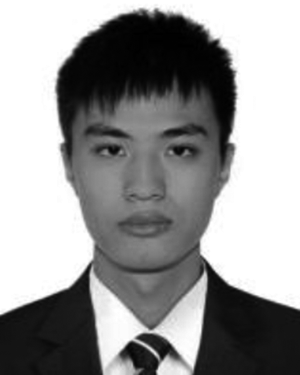
School of Electrical and Electronic Engineering, Nanyang Technological University, Singapore, Singapore
Zesheng Zheng was born in Fujian, China. He received the B.Eng. degree from Nanyang Technological University, Singapore, in 2017, where he is currently working toward the Ph.D. degree with the School of Electrical and Electronic Engineering. His research interests include photoacoustic or thermoacoustic for nondestructive sensing and imaging.
Zesheng Zheng was born in Fujian, China. He received the B.Eng. degree from Nanyang Technological University, Singapore, in 2017, where he is currently working toward the Ph.D. degree with the School of Electrical and Electronic Engineering. His research interests include photoacoustic or thermoacoustic for nondestructive sensing and imaging.View more
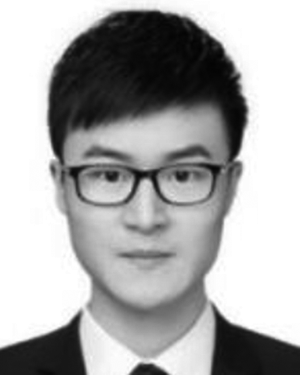
School of Electrical and Electronic Engineering, Nanyang Technological University, Singapore, Singapore
Zhongyuan Fang received the B.Sc. degree in microelectronics from Fudan University, Shanghai, China, in 2016. He is currently working toward the Ph.D. degree with Full Scholarship with the Electrical and Electronic Engineering Department, Nanyang Technological University, Singapore. From 2014 to 2016, he was an undergraduate Research Assistant with the State Key Laboratory of ASIC and System, Shanghai, China. Since 2016, ...Show More
Zhongyuan Fang received the B.Sc. degree in microelectronics from Fudan University, Shanghai, China, in 2016. He is currently working toward the Ph.D. degree with Full Scholarship with the Electrical and Electronic Engineering Department, Nanyang Technological University, Singapore. From 2014 to 2016, he was an undergraduate Research Assistant with the State Key Laboratory of ASIC and System, Shanghai, China. Since 2016, ...View more
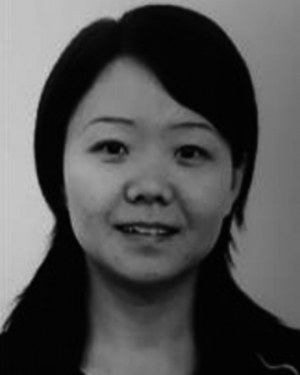
School of Electrical and Electronic Engineering, Nanyang Technological University, Singapore, Singapore
Xiaoyan Tang received the B.S. degree in electronic engineer from Xian Jiaotong University, Xi'an, China and the M.S. degree in electronic engineering from Nanyang Technological University, Singapore. After graduation, she was a Digital System Engineer in industry for years. Since 2014, she has been with the School of EEE, Nanyang Technological University for digital system design and implementation of digital communicati...Show More
Xiaoyan Tang received the B.S. degree in electronic engineer from Xian Jiaotong University, Xi'an, China and the M.S. degree in electronic engineering from Nanyang Technological University, Singapore. After graduation, she was a Digital System Engineer in industry for years. Since 2014, she has been with the School of EEE, Nanyang Technological University for digital system design and implementation of digital communicati...View more
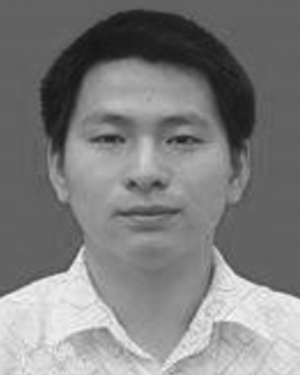
School of Electrical and Electronic Engineering, Nanyang Technological University, Singapore, Singapore
Kai Tang received the B.S., M.S., and Ph.D. degrees in information and computing science, software engineering (IC design), and circuits and system from Southeast University, Nanjing, China, in 2005, 2008, and 2014, respectively. From 2013 to 2014, he joined the School of Electrical and Electronic Engineering, Nanyang Technological University (NTU), Singapore, as a Ph.D. international Exchange Student. He is currently wit...Show More
Kai Tang received the B.S., M.S., and Ph.D. degrees in information and computing science, software engineering (IC design), and circuits and system from Southeast University, Nanjing, China, in 2005, 2008, and 2014, respectively. From 2013 to 2014, he joined the School of Electrical and Electronic Engineering, Nanyang Technological University (NTU), Singapore, as a Ph.D. international Exchange Student. He is currently wit...View more
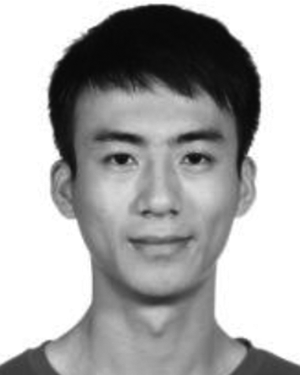
School of Electrical and Electronic Engineering, Nanyang Technological University, Singapore, Singapore
Siyu Liu received the B.S. degree in physics from Nanjing University, Nanjing, China, in 2015. He is currently working toward the Ph.D. degree with the School of Electrical and Electronic Engineering, Nanyang Technological University, Singapore. His research interests include ultrasound imaging, photoacoustic imaging, and portable or wearable system design.
Siyu Liu received the B.S. degree in physics from Nanjing University, Nanjing, China, in 2015. He is currently working toward the Ph.D. degree with the School of Electrical and Electronic Engineering, Nanyang Technological University, Singapore. His research interests include ultrasound imaging, photoacoustic imaging, and portable or wearable system design.View more
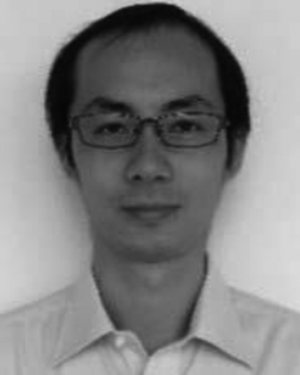
School of Electrical and Electronic Engineering, Nanyang Technological University, Singapore, Singapore
Liheng Lou (Member, IEEE) received the B.Eng. degree in electronic science and technology from the Hefei University of Technology, Hefei, China, in 2006, the M.Eng. degree in micro-electronics and solid-state electronics from Hangzhou Dianzi University, Hangzhou, China, in 2009, and the Ph.D. degree in circuits and systems from Zhejiang University, Hangzhou, China, in 2013. In 2013, he joined the School of Electrical and ...Show More
Liheng Lou (Member, IEEE) received the B.Eng. degree in electronic science and technology from the Hefei University of Technology, Hefei, China, in 2006, the M.Eng. degree in micro-electronics and solid-state electronics from Hangzhou Dianzi University, Hangzhou, China, in 2009, and the Ph.D. degree in circuits and systems from Zhejiang University, Hangzhou, China, in 2013. In 2013, he joined the School of Electrical and ...View more
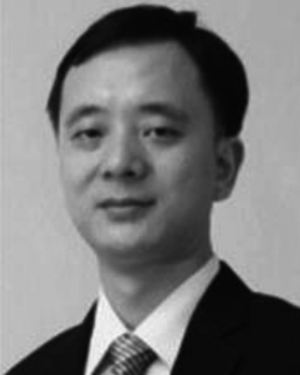
School of Electrical and Electronic Engineering, Nanyang Technological University, Singapore, Singapore
Yuanjin Zheng (Senior Member, IEEE) received the B.Eng. and M.Eng. degrees from Xi'an Jiaotong University, Xi'an, China, in 1993 and 1996, respectively, and the Ph.D. degree from Nanyang Technological University, Singapore, in 2001. From 1996 to 1998, he was with the National Key Laboratory of Optical Communication Technology, University of Electronic Science and Technology of China, Chengdu, China. In 2001, he joined the...Show More
Yuanjin Zheng (Senior Member, IEEE) received the B.Eng. and M.Eng. degrees from Xi'an Jiaotong University, Xi'an, China, in 1993 and 1996, respectively, and the Ph.D. degree from Nanyang Technological University, Singapore, in 2001. From 1996 to 1998, he was with the National Key Laboratory of Optical Communication Technology, University of Electronic Science and Technology of China, Chengdu, China. In 2001, he joined the...View more

School of Electrical and Electronic Engineering, Nanyang Technological University, Singapore, Singapore
Chuanshi Yang (Member, IEEE) received the B.Sc. degree from Shandong University, Jinan, China, in 2012, the M. Eng. degree from Southeast University, Nanjing, China, in 2015, and the Ph.D. degree from Nanyang Technological University, Singapore, in 2020. His current research interests include the high-resolution low power ADC and interface circuits for ultrasound sensors.
Chuanshi Yang (Member, IEEE) received the B.Sc. degree from Shandong University, Jinan, China, in 2012, the M. Eng. degree from Southeast University, Nanjing, China, in 2015, and the Ph.D. degree from Nanyang Technological University, Singapore, in 2020. His current research interests include the high-resolution low power ADC and interface circuits for ultrasound sensors.View more

School of Electrical and Electronic Engineering, Nanyang Technological University, Singapore, Singapore
Zesheng Zheng was born in Fujian, China. He received the B.Eng. degree from Nanyang Technological University, Singapore, in 2017, where he is currently working toward the Ph.D. degree with the School of Electrical and Electronic Engineering. His research interests include photoacoustic or thermoacoustic for nondestructive sensing and imaging.
Zesheng Zheng was born in Fujian, China. He received the B.Eng. degree from Nanyang Technological University, Singapore, in 2017, where he is currently working toward the Ph.D. degree with the School of Electrical and Electronic Engineering. His research interests include photoacoustic or thermoacoustic for nondestructive sensing and imaging.View more

School of Electrical and Electronic Engineering, Nanyang Technological University, Singapore, Singapore
Zhongyuan Fang received the B.Sc. degree in microelectronics from Fudan University, Shanghai, China, in 2016. He is currently working toward the Ph.D. degree with Full Scholarship with the Electrical and Electronic Engineering Department, Nanyang Technological University, Singapore. From 2014 to 2016, he was an undergraduate Research Assistant with the State Key Laboratory of ASIC and System, Shanghai, China. Since 2016, he has been with the Virtus IC Design Center of Excellence, Singapore. His research interests include analog or mixedsignal and low-power integrated circuit design, energy-efficient algorithms for physiological signal extraction, AI-enabled IC design, and RF/Wireless communication circuits and systems design and testing for biomedical applications. He was the recipient of the Excellent Student Scholarship from Fudan University, in 2016. He was also the recipient of the Fudan Science and Technology Innovation Award. He received the highest grade on his B.S. graduation thesis. His work has been published in several leading conferences and journals.
Zhongyuan Fang received the B.Sc. degree in microelectronics from Fudan University, Shanghai, China, in 2016. He is currently working toward the Ph.D. degree with Full Scholarship with the Electrical and Electronic Engineering Department, Nanyang Technological University, Singapore. From 2014 to 2016, he was an undergraduate Research Assistant with the State Key Laboratory of ASIC and System, Shanghai, China. Since 2016, he has been with the Virtus IC Design Center of Excellence, Singapore. His research interests include analog or mixedsignal and low-power integrated circuit design, energy-efficient algorithms for physiological signal extraction, AI-enabled IC design, and RF/Wireless communication circuits and systems design and testing for biomedical applications. He was the recipient of the Excellent Student Scholarship from Fudan University, in 2016. He was also the recipient of the Fudan Science and Technology Innovation Award. He received the highest grade on his B.S. graduation thesis. His work has been published in several leading conferences and journals.View more

School of Electrical and Electronic Engineering, Nanyang Technological University, Singapore, Singapore
Xiaoyan Tang received the B.S. degree in electronic engineer from Xian Jiaotong University, Xi'an, China and the M.S. degree in electronic engineering from Nanyang Technological University, Singapore. After graduation, she was a Digital System Engineer in industry for years. Since 2014, she has been with the School of EEE, Nanyang Technological University for digital system design and implementation of digital communication and neural network.
Xiaoyan Tang received the B.S. degree in electronic engineer from Xian Jiaotong University, Xi'an, China and the M.S. degree in electronic engineering from Nanyang Technological University, Singapore. After graduation, she was a Digital System Engineer in industry for years. Since 2014, she has been with the School of EEE, Nanyang Technological University for digital system design and implementation of digital communication and neural network.View more

School of Electrical and Electronic Engineering, Nanyang Technological University, Singapore, Singapore
Kai Tang received the B.S., M.S., and Ph.D. degrees in information and computing science, software engineering (IC design), and circuits and system from Southeast University, Nanjing, China, in 2005, 2008, and 2014, respectively. From 2013 to 2014, he joined the School of Electrical and Electronic Engineering, Nanyang Technological University (NTU), Singapore, as a Ph.D. international Exchange Student. He is currently with Virtus, IC design Center of Excellence, NTU, Singapore, as a Research Fellow. His current research interests include analog circuits, data converter, transceivers for CMOS FMCW/pulsed chirp Radar, Lidar, and phased array.
Kai Tang received the B.S., M.S., and Ph.D. degrees in information and computing science, software engineering (IC design), and circuits and system from Southeast University, Nanjing, China, in 2005, 2008, and 2014, respectively. From 2013 to 2014, he joined the School of Electrical and Electronic Engineering, Nanyang Technological University (NTU), Singapore, as a Ph.D. international Exchange Student. He is currently with Virtus, IC design Center of Excellence, NTU, Singapore, as a Research Fellow. His current research interests include analog circuits, data converter, transceivers for CMOS FMCW/pulsed chirp Radar, Lidar, and phased array.View more

School of Electrical and Electronic Engineering, Nanyang Technological University, Singapore, Singapore
Siyu Liu received the B.S. degree in physics from Nanjing University, Nanjing, China, in 2015. He is currently working toward the Ph.D. degree with the School of Electrical and Electronic Engineering, Nanyang Technological University, Singapore. His research interests include ultrasound imaging, photoacoustic imaging, and portable or wearable system design.
Siyu Liu received the B.S. degree in physics from Nanjing University, Nanjing, China, in 2015. He is currently working toward the Ph.D. degree with the School of Electrical and Electronic Engineering, Nanyang Technological University, Singapore. His research interests include ultrasound imaging, photoacoustic imaging, and portable or wearable system design.View more

School of Electrical and Electronic Engineering, Nanyang Technological University, Singapore, Singapore
Liheng Lou (Member, IEEE) received the B.Eng. degree in electronic science and technology from the Hefei University of Technology, Hefei, China, in 2006, the M.Eng. degree in micro-electronics and solid-state electronics from Hangzhou Dianzi University, Hangzhou, China, in 2009, and the Ph.D. degree in circuits and systems from Zhejiang University, Hangzhou, China, in 2013. In 2013, he joined the School of Electrical and Electronic Engineering, Nanyang Technological University, Singapore, as a Research Fellow and then promoted as a Senior Research Fellow. He is involved in developing CMOS transceiver system-on-a-chips for radar, phased or timed array, and 60-GHz Wi-Fi. His current research interests include all-digital frequency synthesis, time-to-digital converter, transceivers for frequency-modulated continuous-wave (FMCW)/pulsed chirp radar, Lidar, and phased array.
Liheng Lou (Member, IEEE) received the B.Eng. degree in electronic science and technology from the Hefei University of Technology, Hefei, China, in 2006, the M.Eng. degree in micro-electronics and solid-state electronics from Hangzhou Dianzi University, Hangzhou, China, in 2009, and the Ph.D. degree in circuits and systems from Zhejiang University, Hangzhou, China, in 2013. In 2013, he joined the School of Electrical and Electronic Engineering, Nanyang Technological University, Singapore, as a Research Fellow and then promoted as a Senior Research Fellow. He is involved in developing CMOS transceiver system-on-a-chips for radar, phased or timed array, and 60-GHz Wi-Fi. His current research interests include all-digital frequency synthesis, time-to-digital converter, transceivers for frequency-modulated continuous-wave (FMCW)/pulsed chirp radar, Lidar, and phased array.View more

School of Electrical and Electronic Engineering, Nanyang Technological University, Singapore, Singapore
Yuanjin Zheng (Senior Member, IEEE) received the B.Eng. and M.Eng. degrees from Xi'an Jiaotong University, Xi'an, China, in 1993 and 1996, respectively, and the Ph.D. degree from Nanyang Technological University, Singapore, in 2001. From 1996 to 1998, he was with the National Key Laboratory of Optical Communication Technology, University of Electronic Science and Technology of China, Chengdu, China. In 2001, he joined the Institute of Microelectronics (IME), Agency for Science, Technology and Research, Singapore, where he was a Principal Investigator and the Group Leader. In 2009, he joined Nanyang Technological University, and is currently the Center Director of VIRTUS IC Design Center of Excellence and Program Director of VALENS bio instrumentation, devices and signal Processing. With IME, he led and developed various projects like CMOS RF transceivers, baseband system-on-chip (SoC) for wireless systems, ultrawideband, and low-power biomedical ICs. He has authored or coauthored more than 400 international journal and conference papers, several book chapters, and holds 26 patents filed or granted. His current research interests include gigahertz radio frequency integrated circuit and SoC design, biosensors and imaging, and surface acoustic wave/bulk acoustic wave/microelectromechanical sensors. He is organizing more than 15 conferences as theTPC and Session Chair, and has delivered more than 25 invited talks at international conferences. He was an Associate Editor for the IEEE Transaction on Biomedical Circuit and Systems, and currently an Associate Editor for the IEEE Journal of Electromagnetics, RF and Microwave in Medicine and Biology.
Yuanjin Zheng (Senior Member, IEEE) received the B.Eng. and M.Eng. degrees from Xi'an Jiaotong University, Xi'an, China, in 1993 and 1996, respectively, and the Ph.D. degree from Nanyang Technological University, Singapore, in 2001. From 1996 to 1998, he was with the National Key Laboratory of Optical Communication Technology, University of Electronic Science and Technology of China, Chengdu, China. In 2001, he joined the Institute of Microelectronics (IME), Agency for Science, Technology and Research, Singapore, where he was a Principal Investigator and the Group Leader. In 2009, he joined Nanyang Technological University, and is currently the Center Director of VIRTUS IC Design Center of Excellence and Program Director of VALENS bio instrumentation, devices and signal Processing. With IME, he led and developed various projects like CMOS RF transceivers, baseband system-on-chip (SoC) for wireless systems, ultrawideband, and low-power biomedical ICs. He has authored or coauthored more than 400 international journal and conference papers, several book chapters, and holds 26 patents filed or granted. His current research interests include gigahertz radio frequency integrated circuit and SoC design, biosensors and imaging, and surface acoustic wave/bulk acoustic wave/microelectromechanical sensors. He is organizing more than 15 conferences as theTPC and Session Chair, and has delivered more than 25 invited talks at international conferences. He was an Associate Editor for the IEEE Transaction on Biomedical Circuit and Systems, and currently an Associate Editor for the IEEE Journal of Electromagnetics, RF and Microwave in Medicine and Biology.View more


